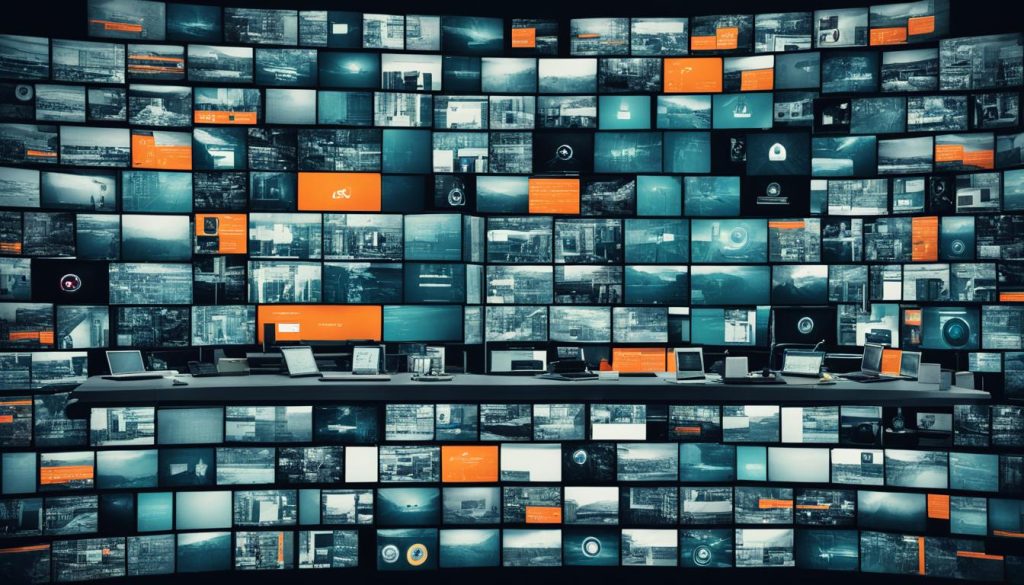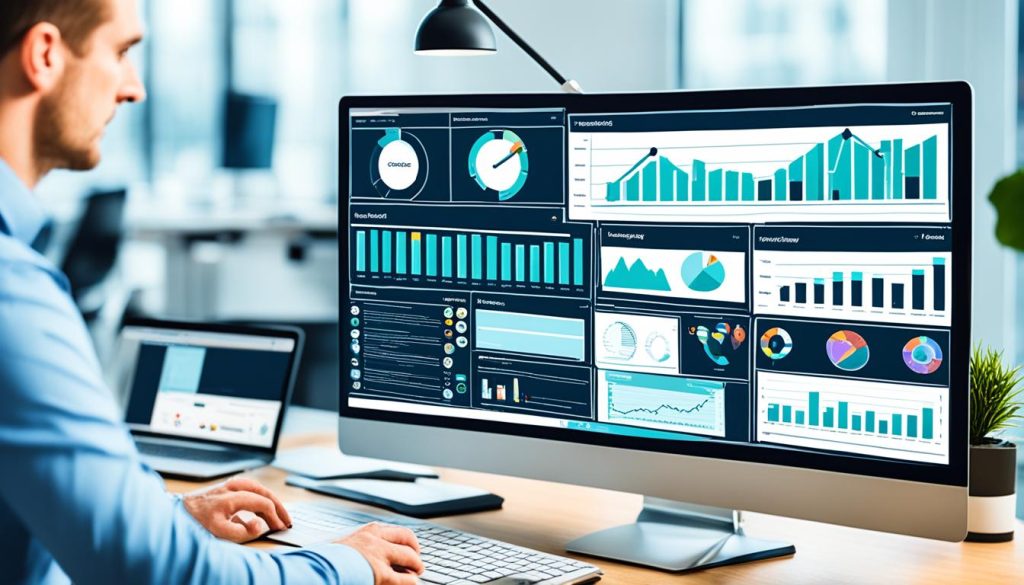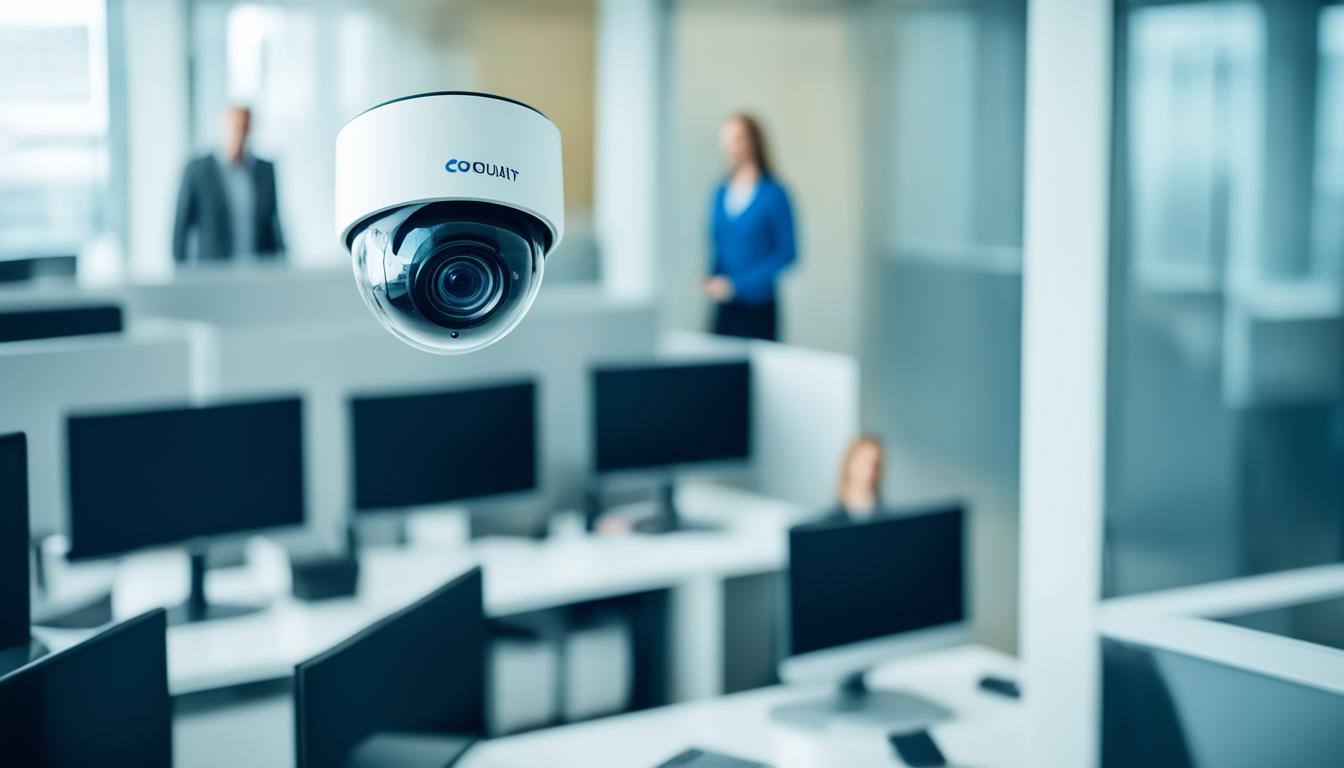Ever wondered how closely your boss is watching your work habits? In today’s digital age, employers have a powerful tool at their disposal: employee monitoring software. But is this technology a step toward better workforce management, or is it a breach of employee privacy?
This article will explore the world of employee surveillance. We’ll see how performance tracking can boost productivity but also cause trust issues. Whether you’re an employer thinking about using such software or an employee worried about your privacy, it’s important to understand both sides. Join us as we look at the good and bad of this common workplace tool.
Are you ready to learn about the balance between improving productivity and keeping privacy? Let’s dive in.
Quick Recommendation: Our blog is filled with tips and tricks on computer monitoring and content filtering tools that enhance the safety of computer users from cyber threats, both for families and employers. If you are seeking the best tools and methods, we recommend SENTRY PC.
What is Employee Monitoring Software?
Employee monitoring software uses monitoring tools to track what employees do at work. These tools include things like keyloggers, time trackers, email watchers, and location finders. Employers use these systems to make sure workers are productive and safe.
These tools help track how employees use their time. Managers can see what websites they visit and how long they work. They also look at how fast tasks are done to understand how well the team is doing.
The data from these monitoring tools is very useful. Managers use it to make work better, find out who does well, and follow rules. Good use of electronic surveillance also helps catch security problems, keeping important info safe.

The Growing Importance of Employee Monitoring
In recent years, employee monitoring has become more crucial. The rise of remote work has made it key for businesses to keep an eye on workplace efficiency. Tools for monitoring help managers see how productive their teams are, even when they’re not in the same place.
Data security is now a top concern in our digital world. Companies must protect sensitive info from hackers. Monitoring software helps spot and stop data leaks, keeping data safe from cyber threats.

Managing employees well is important, even when they work from home. With remote work, new ways to lead and support teams are needed. Monitoring tools let bosses see where team members might need help or training, making the team work better.
More companies are using employee monitoring software. Studies show that using these tools leads to better workplace efficiency and stronger data protection. Knowing about these trends helps companies stay ahead in a fast-changing market.
Key Features of Employee Monitoring Software
Employee monitoring software has grown into a powerful tool. It helps improve work productivity and keeps everyone accountable. A key feature is user activity monitoring, which shows how employees use their time. This makes sure time is used well, helping with better fleet management.

Quick Recommendation: Our blog is filled with tips and tricks on computer monitoring and content filtering tools that enhance the safety of computer users from cyber threats, both for families and employers. If you are seeking the best tools and methods, we recommend SENTRY PC.
Screen recording is another important feature. It lets employers see what their team does in real-time or look back at past activities. This helps spot any issues and make sure everyone follows company rules. Screen recording is also great for training, letting you go back and see important parts or mistakes.
Time tracking features are crucial too. They help log work hours correctly, making it clear when people are working well or not. This is key for things like tracking billable hours or checking project times. Time tracking helps manage resources better.
Productivity analysis is another big part of these tools. It gives important info on how efficient employees are. Employers can make reports that show who’s doing well and where they can get better. This helps in making smart choices about who gets what tasks and how much work they should do.
Top employee monitoring software includes Hubstaff, Teramind, and Time Doctor. These tools have everything needed for monitoring user activity, recording screens, tracking time, and analyzing productivity. They help businesses keep a productive and responsible work place.
Benefits: Enhancing Productivity and Accountability
Employee monitoring software boosts productivity and accountability at work. It tracks how tasks are done and spots areas to improve. This makes work flow better and more efficient.
Using this software also makes employees work better. You can see real-time data to manage resources well. Everyone follows company rules more closely, making a culture of accountability.

Studies show that companies using this tech see a 20% jump in employee efficiency. A Gartner survey found this out. These tools fairly measure performance, helping spot top workers and support others.
This software also helps in making better decisions. Managers can use the data to improve workflows, leading to better business results. When people know they’re being watched, they stick to rules more, reducing rule-breaking.
So, employee monitoring does more than just boost work output. It also builds a culture of responsibility and fairness. It gives a clear view of daily work, helping businesses use resources well. This benefits both employees and the company.
Drawbacks: Privacy Concerns and Trust Issues
In the debate over workplace surveillance, a big worry is losing trust at work. When bosses watch over employees too closely, it can make a workplace feel like a place of suspicion. This hurts how happy employees are and makes them feel their privacy is being taken away.
Studies show that feeling watched can make employees unhappy and stressed. This loss of trust can turn the workplace into a place where it’s hard to work together. Also, the way some software invades privacy can lead to big risks, like personal data being shared or used wrongly.
Experts say some monitoring is needed, but it must respect employees’ privacy. Too much watching can destroy trust and bring big legal problems for bosses. So, finding a balance in the debate over workplace surveillance is key. It helps keep a good work environment and protects employee happiness.
Legal Aspects of Employee Monitoring
When using employee monitoring software, knowing the law is key. It’s important to follow the rules to protect employee rights and avoid legal trouble. The Electronic Communications Privacy Act (ECPA) is a major law that guides how to monitor electronic messages.
Workplace laws change from state to state in the U.S. Some states say employers must tell workers they’re being watched online. Others have easier rules. Knowing the laws in your state is crucial to stay legal and respect employee rights.
Being legal isn’t just about avoiding lawsuits. It’s also about creating a fair workplace. Following the law shows you care about privacy and treat everyone fairly.
In short, making sure your employee monitoring follows the law is a must. Always think about the ECPA and local laws to keep your business and employees safe.
Implementing Employee Monitoring: Best Practices
Adding employee monitoring software to your workplace needs careful thought and a balanced view. Begin with informed consent by clearly telling your employees why and how you’ll be monitoring. This makes sure they know the purpose and limits of the software, building trust and openness.
Creating transparent policies is key. These policies should say when and how you’ll monitor. They should be easy to find and updated often to keep up with changes. Knowing about these policies helps ease worries and boosts teamwork.
It’s important to monitor ethically. This means protecting your employees’ privacy while reaching your business aims. Don’t monitor too much, as it can cause discomfort or mistrust. Regular checks on your monitoring make sure it’s fair and right.
Setting up an employee feedback loop is also crucial. This lets employees share their thoughts and worries about monitoring. By listening to them, you can make changes, making the monitoring better accepted and more effective.
It’s key to balance efficiency with respect when using monitoring tools. By focusing on informed consent, transparent policies, ethical monitoring, and an employee feedback loop, you can make a work environment that supports both productivity and respect.
Future Trends in Employee Monitoring Software
The world of employee monitoring software is always changing. New tech and changing values are driving these changes. AI in monitoring tools are becoming more common. They can look at lots of data quickly, helping managers make better choices.
Predictive analytics are also changing the game. They use past data to predict future problems. This lets companies solve issues before they start, making work better for everyone.
There’s a big push for employee engagement trends in monitoring software too. New tools don’t just track work but also help improve how happy employees are. This makes the workplace a better place to be.
Privacy laws are also playing a big role in how companies watch their workers. It’s important to follow these laws while still respecting privacy. Companies must keep up with these laws to avoid trouble and keep their workers’ trust.
In the end, the future of employee monitoring software is about finding a balance. It’s about using new tech in a way that’s fair and right. This will lead to a workplace that’s more efficient and just for everyone.
Conclusion
Employee monitoring software has its ups and downs. It can boost productivity and make people more accountable. But, it also brings up big privacy and trust issues. Finding the right balance is key to using technology and privacy wisely.
This software has many useful features for companies. But, keeping trust with employees is crucial. By being open and clear about their policies, employers can lessen the negative effects on morale.
The future of work will likely see more tech in monitoring employees. It’s important to think about how this will change the workplace. We must always consider the human side of these changes. Keeping up a conversation about ethics and laws will help make sure these tools fit well into our work lives.
Quick Recommendation: Our blog is filled with tips and tricks on computer monitoring and content filtering tools that enhance the safety of computer users from cyber threats, both for families and employers. If you are seeking the best tools and methods, we recommend SENTRY PC.

